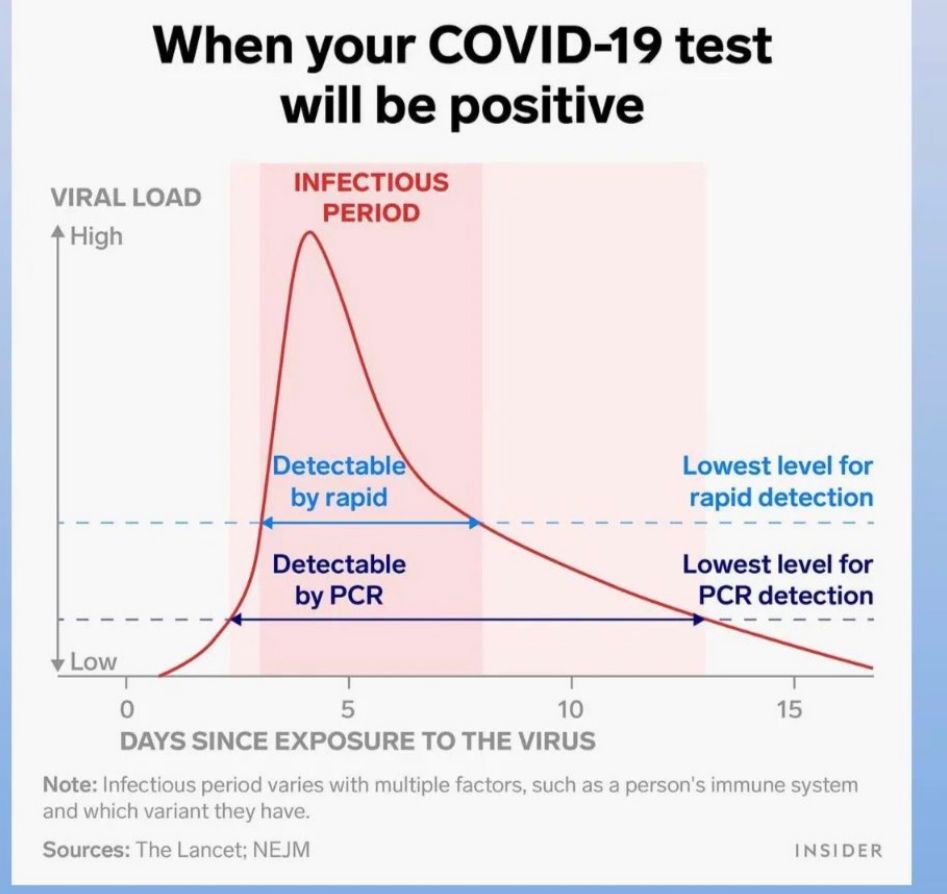1 Great semi-quantitative representation
2 if it was quantitative, vertical axis would-be logarithmic
An approximated answer to @[email protected] question is (?) ... in it's footnote :
infectious period varies with multiple factors, such has a person's immune system and which variant they have.
